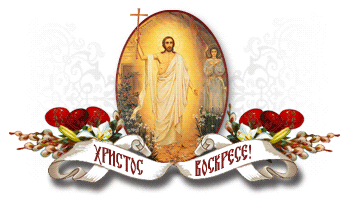
NEW YORK: May 8, 2012
An Exhibition on the History of the Russian Church Abroad Will be Held in Serbia
 An exhibition titled “Towards the History of the Russian Orthodox Church Outside of Russia,” devoted to the dramatic history of the Russian Church in the diaspora from Sremsky Karlovtsy to Jordanville, will be held in Serbia. The exhibition will open in May, 2012, to mark the fifth anniversary of the reestablishment of unity within the Russian Orthodox Church. An exhibition titled “Towards the History of the Russian Orthodox Church Outside of Russia,” devoted to the dramatic history of the Russian Church in the diaspora from Sremsky Karlovtsy to Jordanville, will be held in Serbia. The exhibition will open in May, 2012, to mark the fifth anniversary of the reestablishment of unity within the Russian Orthodox Church.
The persecution of the Church which started in the very first months of the Bolshevik regime forced a significant part of the clerical ranks to flee Russia. Finding herself in exile, the Russian Church was forced to make sense of her existence and her universal calling. On the other hand, it was also necessary to unite her flock, scattered as it was throughout the whole world, as quickly as possible.
In 1920, the Supreme Ecclesiastical Authority Abroad began to operate in Constantinople. Heading this church organ was one of the eldest and most authoritative hierarchs of the Russian Church, Metropolitan Anthony (Khrapovitsky) of Kiev and Galicia.
A year later, the Supreme Ecclesiastical Authority moved to the United Kingdom of Serbia, Croatia and Slovenia. In August, 1921, the Council of Bishops of the Serbian Orthodox Church gave its blessing for the activity of this Russian ecclesiastical body. Patriarch Dimitrije of Serbia gave the refugee Russian bishops a part of his residence in Sremsky Karlovcy, where on November 21, 1921, the first All-Diaspora Russian Church Council of hierarchs, clergymen and laity convened, which laid down the foundation of the canonical status and fate of many Russian parishes abroad. Since 1922, the Synod of Bishops assumed the leadership of the Russian Church Abroad in Sremsky Karlovcy. Until 1936, the Synod of Bishops was headed by Metropolitan Anthony.
The city of Sremsky Karlovcy played a special role in the history of the Russian Orthodox Church Outside of Russia. Here its Councils of Bishops were first held, and in 1938, it hosted the Second All-Diaspora Council of the Russian Church Abroad. After almost all the theological schools in Russia were destroyed, and the study of theology was interrupted, one of its currents, that of preserving the purity of the patristic legacy, was developed in Serbia, which hospitably received many renowned Russian theologians, and taught many church figures, making a significant impact on the post-War history of the Russian Church in exile.
In 1943, the Synod of Bishops of the Russian Church Abroad, whose position had become more vulnerable, moved to Belgrade, and in September 1944, not long before the advance of the Soviet forces, the member bishops and staff of the Synod, together with its head, Metropolitan Anastassy (Gribanovsky), moved to Carlsbad.
The “Serbian mark” in the history of the Russian Church Abroad remained through Germany and Switzerland to the USA. In 1946, the abbot of the then-unknown Holy Trinity Monastery in Jordanville, NY, Archbishop Vitaly (Maximenko), himself hailing from Sremsky Karlovcy, invited almost the entire publishing concern of St Job of Pochaev, led by Bishop Seraphim (Ivanov) from Ladomirovo, Slovakia. Four years later, the Synod of Bishops of the Russian Orthodox Church Outside of Russia resettled in New York City.
The succession of the spiritual traditions uniting these three epochs of Church history determined the theme of this exhibition, which will include 80 photographs and documents revealing the history of the Russian Church Abroad, its eminent hierarchs and relations with the external world. Symbolically, the venue for this multimedia exhibition is Serbia, the nation which in difficult times gave succor and support to a significant portion of the legacy of the Russian Orthodox Church.
This exposition will include rare documents and photographic materials from the Alexander Solzhenitsyn House of the Russian Diaspora in Moscow and the archives of Holy Trinity Monastery in Jordanville, NY, photos and correspondence of Metropolitan Anthony, his telegrams to Grand Duke Nikolai Nikolaevich, autographs of Metropolitan Anastassy, epistles of the Synod of Bishops, photos of the Russian diaspora in Serbia, and also photos showing the life of Holy Trinity Monastery.

|